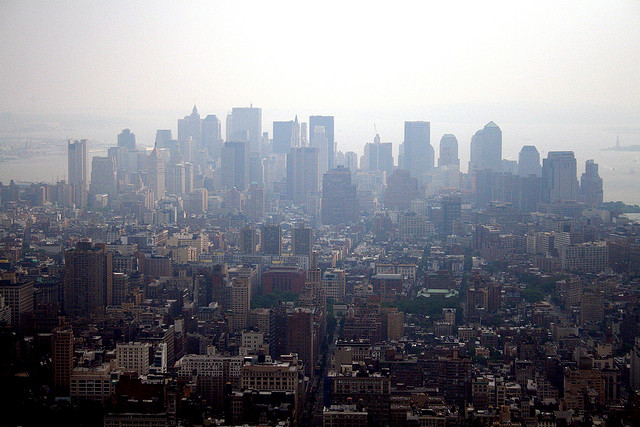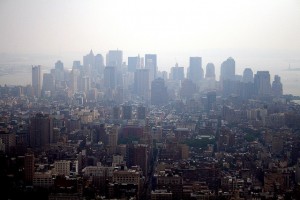
 A recent editorial published in the journal Environmental Health Perspectives (April 2012) called for increased research to identify possible environmental causes of autism and other neurodevelopmental disorders in children.
A recent editorial published in the journal Environmental Health Perspectives (April 2012) called for increased research to identify possible environmental causes of autism and other neurodevelopmental disorders in children.
Huh? Weren’t we taught that autism was the result of vaccines, or genetic factors, or infections, or other problems.
Most of these (except for vaccines, a cause that has been disproven) are still potential contributors to autism, but now the idea that environmental toxins could play a very big part in damaging developing brains is gaining momentum.
Scientists Showing Us Evidence
It was back in 2010 that The New York Times published a column entitled, “Do Toxins Cause Autism?” In that article, pulitizer-prize winner Nicholas D. Kristof presented the evidence for the argument. An article published in the journal Current Opinion on Pediatrics stated that the “likelihood is high” that many chemicals “have potential to cause injury to the developing brain and to produce neurodevelopmental disorders.”
“If babies are exposed in the womb or shortly after birth to chemicals that interfere with brain development, the consequences last a lifetime,” said author Dr. Philip J. Landrigan, professor of pediatrics at the Mount Sinai School of Medicine in New York.
Another study published in Environmental Health Perspectives found that women with higher levels of certain phthalates (plasticizers found in fragrances, shampoos, cosmetics, and nail polishes) in their urine were more likely to have children who displayed disruptive behavior later in life.
Research is Mounting
That was in 2010. Now, in 2012, we have even more evidence supporting a connection, and scientists are putting on the steam. The Centers for Disease Control and Prevention (CDC) recently estimated that the prevalence of autism grew by 23 percent between 2006 and 2008-sparking a new urgency to figure out just what is going on.
A California study in 2011 found that babies born to mothers who lived near a highway while pregnant were more likely to be diagnosed as autistic. An earlier 2008 study warned that exposure to mercury-even at levels considered to be completely safe-may cause neurological harm. A 2006 study in Texas found that for every 1,000 pounds of environmentally released mercury, there was a 61 percent increase in the rate of autism.
A large study released in 2011 studied sets of identical and fraternal twins, found that fewer than 40 percent of cases of autism were caused strictly by genetics, whereas shared environmental factors, including exposures to potential toxins in the womb, were implicated in nearly 60 percent of the cases.
“A large number of the chemicals in widest use have not undergone even minimal assessment of potential toxicity and this is of great concern,” wrote Dr. Landrigen. “Knowledge of environmental causes of neurodevelopmental disorders is critically important because they are potentially preventable.”
Ten Chemicals Suspected of Causing Autism
Though family history, genetics, and fetal exposure to certain medications are still believed to play their parts in causing autism, toxins are now getting the attention they “deserve,” in that scientists are delving deeper into their sinister effects.
The Children’s Environmental Health Center (CEHC) has developed a list of ten chemicals found in consumer products that are suspected of contributing to autism and other learning disabilities. Scientists plan to conduct more studies on these chemicals in particular. Meanwhile, you can use this list as a guide for which chemicals are best kept out of your home and away from your developing child:
- Lead
- Methylmercury
- PCBs (polychlorinated biphenyls)-used as coolants, lubricants, and lighting fixtures. The U.S. stopped manufacturing these in 1977 because of evidence they build up in the environment and cause harmful health effects. Because they don’t break down easily, they are still widely distributed in the environment.
- Organophosphate pesticides
- Organochlorine pesticides
- Endocrine disruptors-any chemical that can mimic the action of hormones in our bodies. Read my post on hormone disruptors for more.
- Automotive exhaust
- Polycyclic aromatic hydrocarbons (PAHs)-chemicals that occur naturally in coal, crude oil, and gasoline. These are more plentiful in the air around cities than in the air in rural areas. Tobacco smoke, smoke from wood-burning stoves, and forest fires can also release PAHs. Even shampoos and cosmetics made with coal tar can contain them.
- Brominated flame retardants-the most widely used flame retardants in commercial products. You’ll find them in plastics, electronics, clothing, and furniture.
- Perfluorinated compounds (PFCs)-these chemicals make materials stain- and stick-resistant. You may find them in non-stick cookware, pizza boxes, popcorn bags, stain-resistant carpets, pains, and windshield washer fluid.
In In addition to avoiding these toxins, you can also try these tips to increase the odds that your child will not suffer from neurodevelopmental disorders:
- Talk to your doctor about taking prenatal vitamins-one study found that mothers taking them during the three months before conception reported a nearly 40 percent lower risk of giving birth to children who developed autism.
- Eat organic as much as possible-they have fewer pesticides.
- Choose low-mercury fish, particularly while pregnant.
- Avoid plastics with BPA-microwave and cook in glass instead, and use a stainless steel water bottle. Look for BPA-free canned foods as well.
- Check your house for lead, and don’t sand down any old paint that could contain lead.
- Maintain a healthy weight-some studies have indicated that obese mothers could be more at risk for having children with autism.
What do you think of the potential link between toxins and autism?
Picture courtesy Bikoy via Flickr.com.
Sources
Mount Sinai Medical Center (2012, April 25). Top ten toxic chemicals suspected to cause autism and learning disabilities. ScienceDaily. Retrieved September 15, 2012, from http://www.sciencedaily.com /releases/2012/04/120425140118.htm.
Nicholas D. Kristof, “Do Toxins Cause Autism?” The New York Times, February 24, 2010, http://www.nytimes.com/2010/02/25/opinion/25kristof.html?_r=0.
Liz Szabo, “Researchers Hunt for Causes of Autism, USA Today, April 2, 2012, http://www.usatoday.com/news/health/story/2012-04-01/autism-causes-research/53955392/1.
David Kirby, “New Study: Mercury, Other Toxins May Cause Autism,” Huffington Post, October 30, 2008, http://www.huffingtonpost.com/david-kirby/new-study-mercury-other-t_b_139269.html.
Brian Clark Howard, “Zeroing in on the Causes of Autism,” News Watch, May 4, 2012, http://newswatch.nationalgeographic.com/2012/05/04/causes-of-autism/.
Leah Zerbe, “Autism’s Most Common Cause: Environmental Factors,” Rodale, http://www.rodale.com/causes-autism-0.

